Taking Measure
Just a Standard Blog
Standing Up for Scientific Integrity: A Q&A With Writer-Director José Ricardo García on the New Film ‘The AD-X2 Controversy’
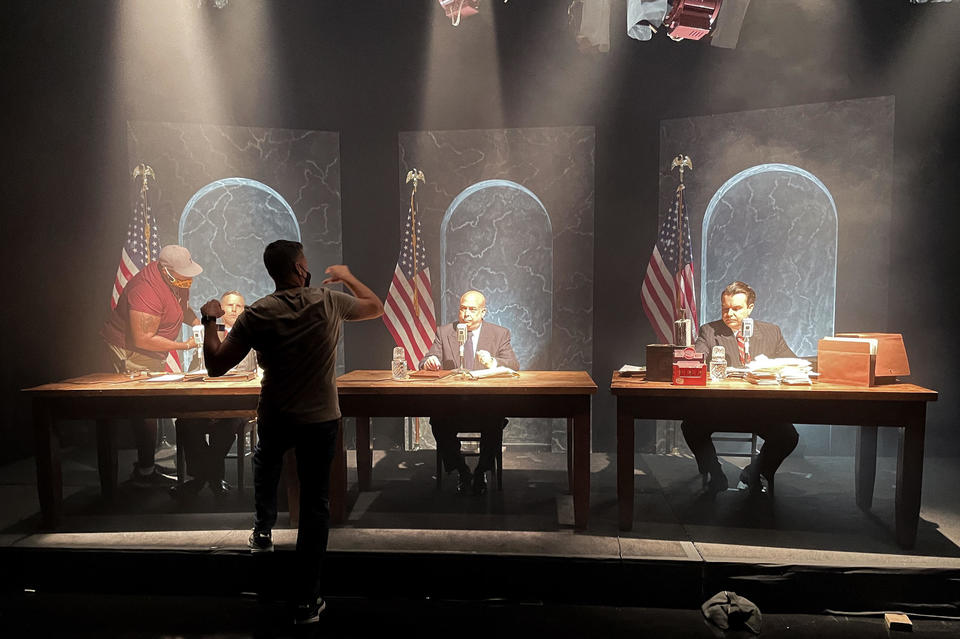
José Ricardo García directs actors (from left to right) Evan Casey (playing Allen Astin), Joel Snyder (playing Secretary of Commerce Sinclair Weeks) and Adam Cooley (playing Ritchie).
In the 1940s, a battery additive called AD-X2 hit the market in the U.S. The company claimed that the additive could extend the life of car and truck batteries.
NIST, then known as the National Bureau of Standards, had been testing battery additives for years, and none had been effective. The Federal Trade Commission and U.S. Post Office asked NIST to test AD-X2. When it was also found to be ineffective, the company did not accept the results.
When Allen V. Astin became the director of NIST in 1952, he pushed for another round of tests that still showed no effect. The company producing AD-X2 claimed that the government was colluding with big business and treating its small business unfairly. A political uproar led to Astin’s firing.
But Astin respectfully stood his ground on the accuracy of the test results, and 400 researchers threatened to quit in protest if the agency’s commitment to scientific integrity was compromised. Astin’s legacy of quiet dedication to the truth remains part of NIST culture to this day.
NIST’s Public Affairs Office has spent the last several years working on a film to depict exactly what happened, both to help our new employees learn about this vital part of NIST’s history and to show the public our dedication to impartial science.
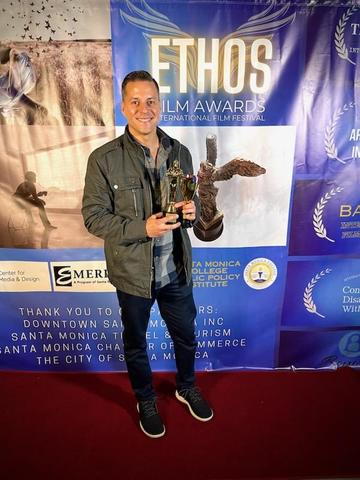
The film has recently been selected for several festivals, including DC Shorts International Film Festival, the San Francisco Documentary Festival, the NewsFest International Film Festival, the International Puerto Rican Heritage Film Festival and the Raw Science Film Festival.
The AD-X2 Controversy was a finalist in the Raw Science Film Festival in the Professional Dramatic Category and won Best True Story Narrative and Best of Festival at the NewsFest International Film Festival.
NIST released The AD-X2 Controversy on its website last week.
Special thanks from the production team to everyone who helped make this film possible. NIST staff members worked in front of and behind the camera, provided research assistance, checked for scientific accuracy and more.
Below we talk with the writer-director, José Ricardo García, about the film.
This film started as an internal project. What made you want to share it with the public?
García: This all started because a former chief of staff used to tell this story in the onboarding process for new employees. He wanted a short video to illustrate it. We knew some of the story, but after doing extensive research, we thought, “This is such a big story. There’s no way we can make a two-minute video about this.”
Once we interviewed the Astin family, we had a lot more information, but we knew we didn’t want it to be one-sided. At that point, it just became a much bigger project.
I think it’s a cautionary tale. There are such things as facts, and scientific facts should be repeatable and testable. Just because you have an opinion about something doesn’t make it true. We wanted to share that message with the public.
Tell me about Jess Ritchie. Why did he become so influential?
García: You know, for a long time in the early stages of the research, I was on his side. He was charismatic; he was likeable. In the U.S., we tend to follow the journey of those hero types, the ones who are moving a story forward. He captivated everybody with the whole mentality of the small entrepreneur, pulling himself up by his bootstraps.
You have to give him credit. He fought hard, and he had a compelling story. Ritchie really knew how to tell a story, and he knew that people like stories.
What did you learn about Allen Astin through this process? Why was he so passionate about the “romance of precision measurement”?
García: Allen Astin was really the prototypical NIST scientist. He was all about serving the nation and doing the right thing.
The challenge that I had as a writer-director of this movie is that he doesn’t come across like your typical likeable hero. He doesn’t move the needle of the action in the story the way Ritchie did.
He just has this quiet integrity, and you can’t help but admire him. When the controversy started, he stayed quiet. He didn’t fight back; he didn’t complain. Astin was proud and stood behind his staff. He had so much faith that the truth would triumph at the end, and it did.
But you know, there are no clear winners in this story. The National Academy of Sciences proved we were right, but Ritchie was allowed to keep selling his product by the Federal Trade Commission and the Post Office.
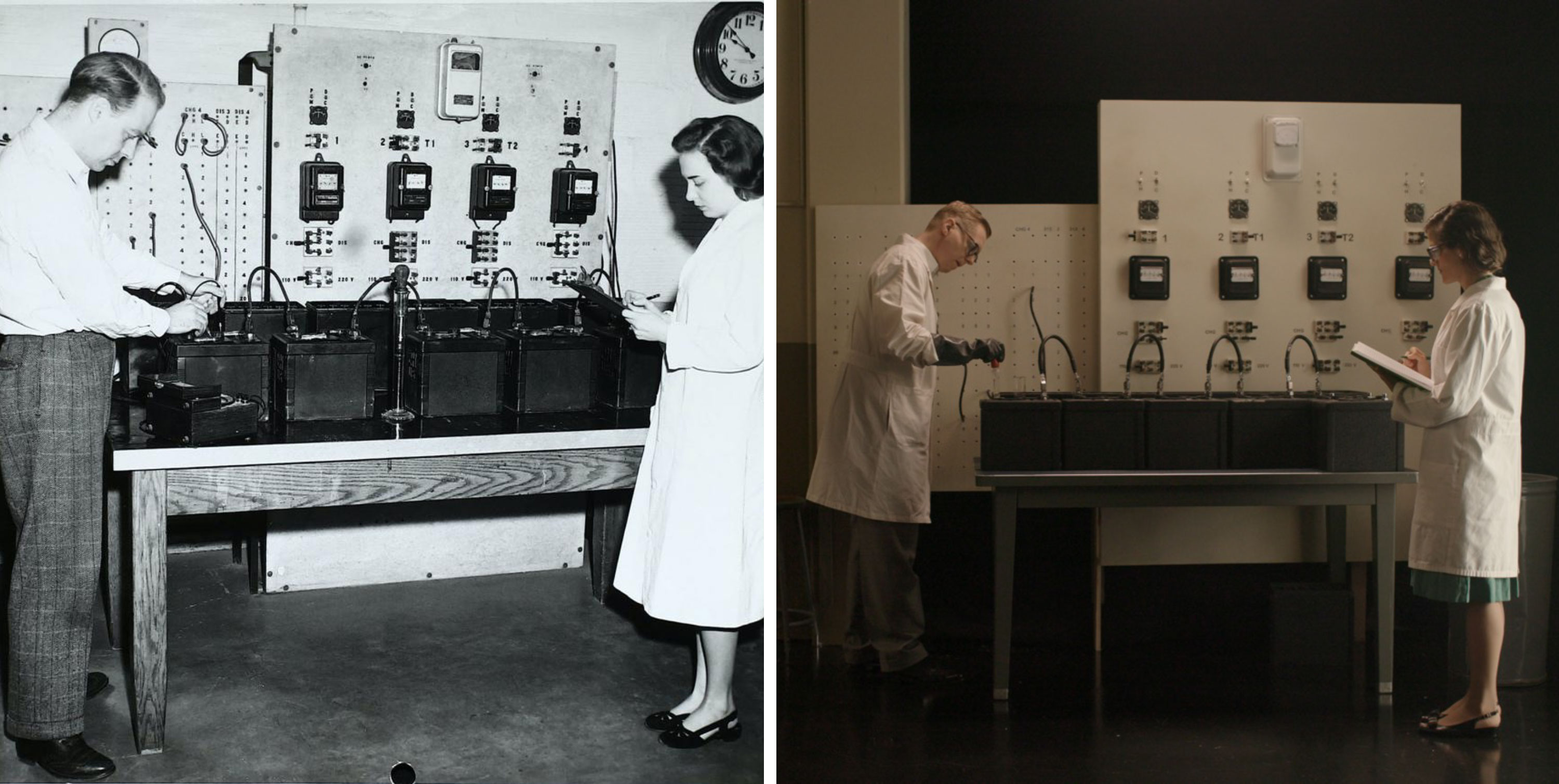
What was the experience of making this film like for you personally?
García: To be quite honest, this was the hardest thing I’ve ever done. It was many years in the making, and that was on and off due to the pandemic. This project helped me get through some difficult personal times. It stretched my abilities as a filmmaker, storyteller, writer, editor, director, you name it. I had never done something with this level of detail, and I can honestly say, we gave it our all.
What was left out of the movie that you wished you could’ve kept in? What guided those choices?
García: I could’ve made a two-hour movie! There was so much that we had to leave out. The biggest thing was the impact this left on the Astin family. It was a really stressful time for them. But we wanted the movie to really be focused on the controversy itself, so that guided the choices.
We didn’t want this to be strictly a NIST movie. We didn’t want this to be a “look how great we are” movie. That was a big part of our approach. We even reached out to Ritchie’s family, but they declined to participate.
Nearly every word in the film was taken from historical record — from interviews, transcripts and Senate hearings. Of course, we had to take some liberties for the sake of storytelling, but it was very carefully researched.
The film has been selected for several film festivals now. What has been the reaction to it so far from audiences?
García: The response has been great everywhere we’ve gone.
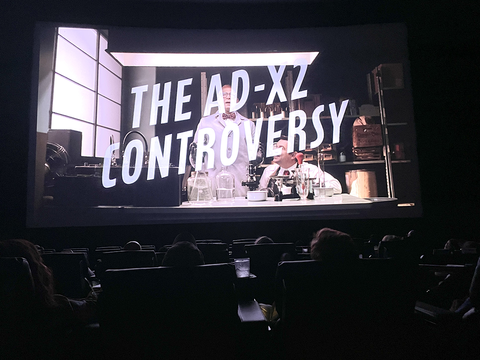
Getting into film festivals is so hard. There are thousands of films, and only a few get picked. So just being selected is an amazing honor. To win awards in some of these festivals, that’s something we didn’t expect.
It was wonderful how well people responded to the film. The crowd cheered for us, and I certainly didn’t expect that! The host at one of the festivals talked about the importance of the work that government does to protect citizens by making sure things work the way they’re supposed to.
The intent of this film was to inspire our current and future NIST employees, but inspiring a general audience has been the cherry on top for us. I’m so happy that now anyone who wants to will be able to watch it.
What do you hope will be the impact of this film?
García: At NIST, our core values are not just something we say. I think people can watch this film and know that if they’re ever in a situation like this, they should be like Astin. They should stand up for what’s right.
This film is bigger than us. It’s really about the truth. It’s about science. It’s about facts. And we need to stand firm for it. I think this is a story that anyone who admires and respects science can relate to.
I hope people see it and are engaged and entertained by it. I hope they learn something about our history, and they get a reminder that integrity and values matter.
I hope people see this and realize that federal employees are capable of so much excellence. I always say it’s my job to make scientists look like rocks stars because I respect and admire their work so much.
Our work doesn’t necessarily get seen by a lot of people, but I want people to see this and learn who NIST really is as an organization. I want viewers to know NIST is a place you can trust. It’s a place that stands for something. It’s a nonregulatory agency that creates new partnerships and great science.
WATCH NOW: The AD-X2 Controversy
Related Posts
Comments
And it wasn't a stressful time for Jess Ritchie?
Why did it become the governments business to put businesses out of business? Yes you proved it didn't work but have you ever heard about caveat emptor? In a free, or what should be a free country, one is free to make "good" decisions or "bad" decisions but why do the government bureaucrats see themselves as the all knowing and always right people? Should the government run the people? Or should the people be able to run their own lives without "Big Brother" going naughty, naughty, naughty as if they are superior?
How much money did you spend on the film to propagandize how invaluable what is now NIST, is today using taxpayer and debt payer money.
Another example is the article on plastics and packaging and the assumptions made by the NIST employee are just her opinions except the government is paying her and NIST to upend what the free market has rightly or wrongly in someone's eyes decided how they are going to do something.
Thanks for your comment.
To clarify, concerns about the AD-X2 product were first raised by the FTC and the Post Office, which have roles in ensuring that advertising is accurate so that consumers can make educated decisions without being misled. Because of those concerns and NBS’ history with testing battery additives, we were asked to specifically test the efficacy of AD-X2, which we did. Mr. Ritchie then insisted that we do another round of tests. He and his associates were present at the tests and couldn’t find any difference between the batteries that received AD-X2 and those that didn’t.
NBS conducted the tests and shared the results; however, it never weighed in on whether or not the product should remain on the market. In fact, Mr. Ritchie was allowed to continue to sell the product even after the test results were released, and consumers were free to continue purchasing it, now with accurate information on its effectiveness.


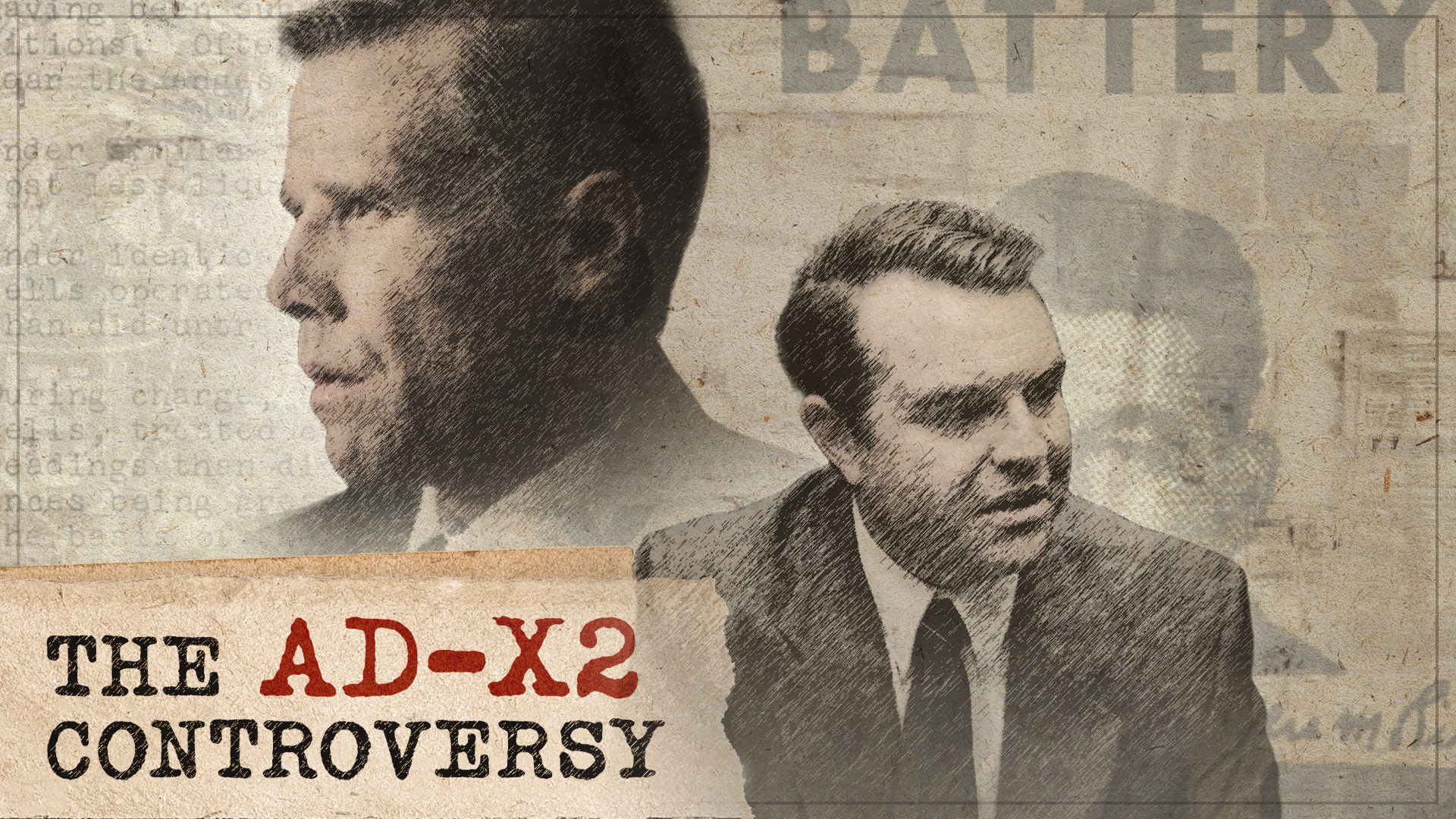



Standards must be as accurate as the testing permits. Responsible people must take their jobs seriously and stand for what is truth and right. Politician influence, back room deals, and downright falsification of information cannot be tolerated!! Always shed light on the Standards issue loudly and firmly until demonstrated scientifically accurate or not by multiple, trustworthy sources.